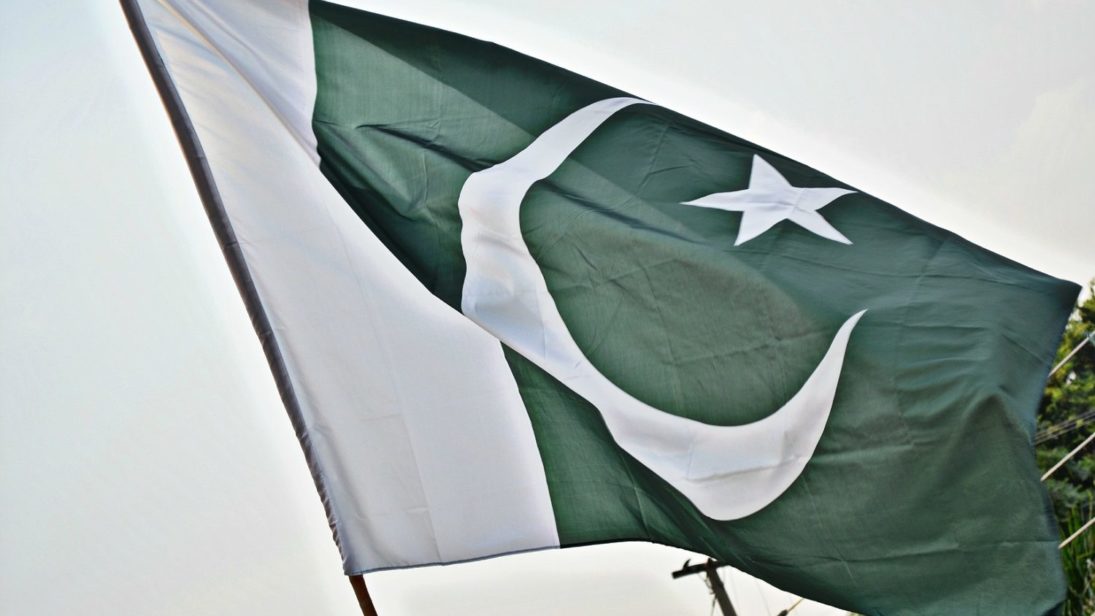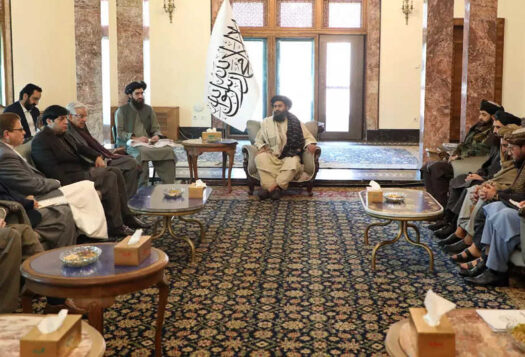
Pakistan’s economic woes – dwindling foreign exchange reserves, low exports, high inflation, growing fiscal deficit, and current account deficit – are nothing new, and once again, the country finds itself knocking on the doors of the International Monetary Fund (IMF) for what will be its 22nd loan. While the exact amount of this package has not been determined, Pakistan already owes the IMF billions from previous programs. Indeed, 30.7% of Pakistan’s government expenditure is earmarked for debt servicing, which cannot be supported by its decreasing revenues. Already on the Financial Action Task Force’s (FATF) grey list, and with the current Pakistan Tehreek-e-Insaf (PTI) government enjoying internal institutional consensus on the national agenda, Pakistan must focus its attention on resolving its economic woes before it finds itself on the shores of bankruptcy.
Current State of the Economy
In 2019, Pakistan finds itself facing a dire macroeconomic crisis. It is spending more on imports than it receives on exports, with its current account deficit having risen from USD $2.7 billion in 2015 to $18.2 billion in 2018. The major driver of this rising current account deficit is an expanding trade deficit, which is mostly due to the rising imports under new China-Pakistan Economic Corridor (CPEC) projects and low exports in general. The previous government focused more on import-led growth strategy to finance large scale projects under CPEC. By the end of June 2018, the gross public debt of Pakistan reached USD $179.8 billion, showing an increase of $25.2 billion within a year. More than half of this increase in gross public debt was due to an increase in public external debt, which grew by 30.1%. In 2018, the depreciation of the Pakistani rupee against the U.S. dollar alone was responsible for an excessive USD $7.9 billion increase in public external debt. Despite the massive depreciation in the rupee, Pakistani exports have remained almost the same. Meanwhile, the government’s external debt has also increased from USD $64.1 billion in June 2018 to USD $65.8 billion in January 2019. The inflation rate is now touching 9.4%, which is a record level high over the last five years mostly due to rupee depreciation and rising energy prices. In addition, increased defense spending and its ongoing fight against extremism only further burden the economy. Along with a depreciating rupee that has made imports costlier, low foreign investment due to Pakistan’s security and political challenges has also severely hit its foreign exchange reserves.
Despite rising deficits, Pakistan’s tax revenue was only 13% of its GDP in 2018. During the current fiscal year, the country has seen a decline in its revenues while expenditures have increased, resulting in a half-year fiscal deficit of 2.7% of GDP, the highest since 2010-11. According to the State Bank of Pakistan, the sharp decline in revenue can be attributed to a fall in development spending, reductions in income and corporate taxes, and taxes on petroleum products, as announced by the previous Pakistan Muslim League-Nawaz (PML-N) government.
Similarly, the previous government failed to make any significant progress in enhancing exports: in fact, Pakistan’s total exports fell in real terms during the PML-N’s tenure. In its recent report “Pakistan @100: Shaping the Future,” the World Bank held weak governance responsible for the fiscal deficit. Pakistan’s poorly regulated financial system facilitates tax evasion, which contributes significantly to the growth of the fiscal deficit. Having inherited this economic crisis from the previous government, the PTI government, led by Prime Minister Imran Khan, has an enormous task ahead: steer Pakistan’s struggling economy out of a macroeconomic crisis by fostering economic development.
Having inherited this economic crisis from the previous government, the PTI government, led by Prime Minister Imran Khan, has an enormous task ahead: steer Pakistan’s struggling economy out of a macroeconomic crisis by fostering economic development.
With its domestic industry in ruins, Pakistan has not been able to rely on consistent foreign investment for more than stopgap measures. It did recently receive USD $2 billion from the United Arab Emirates (UAE) through the Abu Dhabi Fund for Development (ADFD), which provides concessionary development loans. This inflow has increased Pakistan’s foreign reserves from USD $14.956 billion at the start of March 2019 to $17.398 billion. In February, the Crown Prince of Saudi Arabia, Mohammad bin Salman, signed seven Memorandums of Understanding (MoUs) with Pakistan, pledging up to USD $21 billion worth of investment over the next six years. However, relying only on foreign aid and friendly countries for loans is not enough. If Pakistan is to tackle its current account deficit in the long run, the government must take substantial steps to improve the macroeconomic conditions of the country and modernize its industrial sector to become more competitive in international markets.
The Way Forward: Steps for the Pakistan Government
To make a significant impact on the current account deficit, Pakistan needs to ensure an investment-friendly environment that attracts more foreign direct investment (FDI), instead of relying so heavily on foreign aid. According to the World Bank’s Ease of Doing Business report, Pakistan ranks 136th out of 190 economies. To improve this ranking and draw more investment, Pakistan should ease customs laws and regulations, improve the security of the country, and rebrand and boost its international image as a desirable destination for tourism and industry alike – a goal the current government is set to pursue as it eases its visa policies, including its introduction of e-visas. It should also encourage domestic investment through more flexible tax policies, particularly targeting small and medium-sized enterprises (SMEs). Such measures would reposition Pakistan on the international stage as stable, competitive ground for foreign investment.

Pakistan also needs to focus on building its domestic industry to expand its export portfolio and enhance its competitiveness in the international markets. In 2018, Pakistan ranked 107th out of 140 on the Global Competitiveness Index (GCI), which measures the performance of countries in indicators such as infrastructure, ICT adoption, macroeconomic stability, labor market, skills, financial stability, innovation capacity, etc. The low ranking signifies that the Pakistani government needs to take measures to stimulate economic growth and provide favorable business environment. The country’s ongoing energy crisis, which has caused significant losses in industry, has led factory owners to increasingly relocate to countries such as Bangladesh. Moreover, since its exports currently lose out to low-priced, good-quality products from countries like China and Bangladesh, Pakistan needs to modernize its industrial sector by establishing new plants and equipment to enhance global integration. It can do this by investing in research and development (R&D) to encourage product innovation and enhance labor productivity.
On top of these issues is the larger question of Pakistan’s failure to expand its export portfolio beyond a few low value-added products, such as textiles, rice, surgical goods, carpets, sports goods, and leather items, which is one of the largest factors behind its balance of payments deficit. Broadening the country’s export portfolio and exploring new export destinations such as Eastern European and Central Asian countries could revitalize foreign exchange earnings. As a security-oriented state, Pakistan’s priority has never been the economy, but it now needs to focus more on geoeconomics over geostrategy.
Currently, Pakistan is not taxing its agriculture sector and large businesses are often given big tax breaks. Hence, Pakistan needs to broaden its tax base – by taxing the agricultural produce of landlords with big land holdings and stop giving tax amnesties to big businesses – instead of overburdening current taxpayers, improve fiscal transparency, and strengthen tax collection coordination at the national and provincial levels to ensure that revenue targets are met. These steps would go a long way to addressing the myriad financial and deficit issues stemming from the country’s weak governance.
Conclusion
The coming months are going to be tough for the current government as the rupee is expected to depreciate further, causing inflation to rise. Pakistan’s economic crisis cannot be resolved overnight. Support from the IMF and friendly countries like Saudi Arabia, China, and the UAE will only provide some breathing room in the short term to its shattered economy. Promoting manufacturing by creating a more investment-friendly environment, broadening its tax base, and encouraging innovation and modernization in export-led industries are just some of the most urgent measures the government can take to address the growing fiscal and current account deficit. Pakistan must take advantage of this moment of hard-won reprieve by building a truly stable and sustainable economy before it once again finds itself digging its own economic grave – and that of its people.
***
Click here to read this article in Urdu.
Image 1: PxHere
Image 2: Arif Ali via Getty


